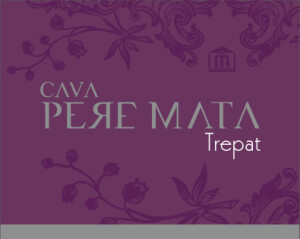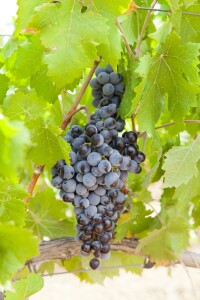Trepat is a relatively unknown red grape variety. At last count, there were just shy of 1,000 hectares (2,400 acres) planted in the world. Most—if not all—of these plantings are in Spain, mainly in Catalonia; although there are a few plantings in Valencia and Murcia (where the grape goes by the synonym Bonicaire).
If Trepat has any claim to fame at all, it is due to its use in Cava, one of the leading sparkling wines of Spain. If you’ve been a student of wine for longer than a year, you were most likely taught that Trepat was allowed for use in Cava, but only in rosé. This certainly was true from 1998 until the middle of 2020. However, in June of that year (just in time for the update to be included in the 2021 edition of the Certified Specialist of Wine Study Guide), the Pliego de Condiciones for the Cava DO was updated and the limitation on the use of Trepat was repealed.
Thus, it seems we are witnessing the Triumph of Trepat. The reason for the change in Cava’s handling of Trepat—as stated in the Official Journal of the EU—is as follows: “In 1998, commercial development of rosé Cava began and the use of the Trepat variety was authorized for making rosé Cava. At present, with demand for rosé wines more than covered, and taking into account the good qualitative assessment of wines made from the Trepat variety, we consider that making white Cava (blanc de noirs) from the Trepat variety is an option of product diversification that does not take away from the quality of the Cava. Therefore, we decided to authorize this proposal so that white Cava may also be obtained from this variety.”
Trepat is a robust grape variety that tends to produce large, compact bunches of thick-skinned grapes. Its lack of popularity (in terms of plantings) may be due to its tendency to early budding and late ripening, making the vines somewhat susceptible to spring frost and harvest time rains.
Red wines produced from Trepat are produced in Catalonia’s Conca de Barberà and Costers de Costers del Segre DOs tend to be pale in color and feature aromas and flavors of red fruit (strawberry, raspberry, red cherry) and sweet spices (cinnamon). A touch of citrus/orange peel bitterness often accompanies the finish.
 Trepat seems to make its best appearances in rosé, both sparkling and still. Several leading Cava producers use the grape in their pink bubbly as well as Trepat rosé (still/non-sparling). One great example is Cava Portell/Vinicola de Sarral, who produces a Trepat-based Portell Rosat Brut Cava as well as a 100% Trepat rosé bottled under Conca de Barberà DO. The Conca de Barberà rosé is described as having aromas of peaches and strawberries along with a crisp, juicy acidity.
Trepat seems to make its best appearances in rosé, both sparkling and still. Several leading Cava producers use the grape in their pink bubbly as well as Trepat rosé (still/non-sparling). One great example is Cava Portell/Vinicola de Sarral, who produces a Trepat-based Portell Rosat Brut Cava as well as a 100% Trepat rosé bottled under Conca de Barberà DO. The Conca de Barberà rosé is described as having aromas of peaches and strawberries along with a crisp, juicy acidity.
Another nice example is the 100% Trepat Cava Rosat produced by Pere Mata; this wine is described as having aromas of “raspberries, cranberries, and hibiscus flowers.” The upstarts of the Spanish sparkling wine world—producers of Corpinnat—are also proponents of Trepat: see Castellroig’s Reserva Brut Rosat for a fascinating example.
Keep an eye out for Trepat…and taste the triumph!
References/for more information:
- Pliego de Condiciones Cava DO-updated June 2020
- Official Journal of the EU regarding Cava DO-2019
- Robinson, Jancis, Julia Harding, and José Vouillamoz: Wine Grapes. New York, 2012: Harper Collins Publishers
- https://visitacastellroig.com/index.php/en/terroir-wines/corpinnat-sparkling-wines/castellroig/brut-rosat
- http://www.cava-portell.com/en/productss-4/cavas/80-productos/179-en-rosat-brut.html
- Cava Pere Mata Trepat Rose
Post authored by Jane A. Nickles…your blog administrator: jnickles@societyofwineeducators.org
